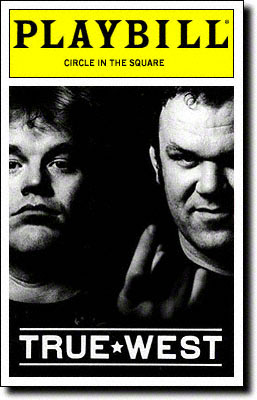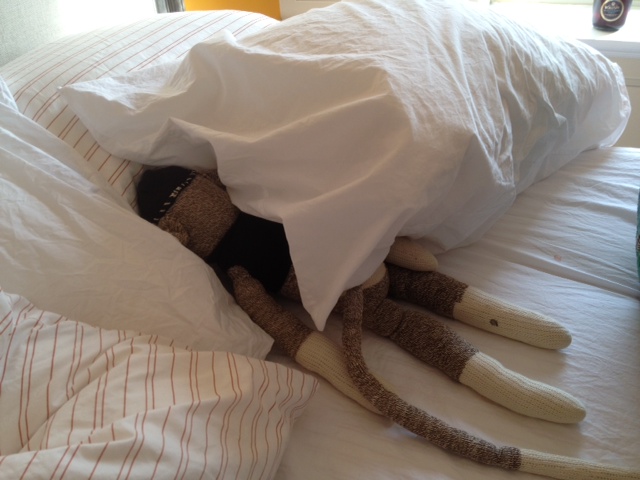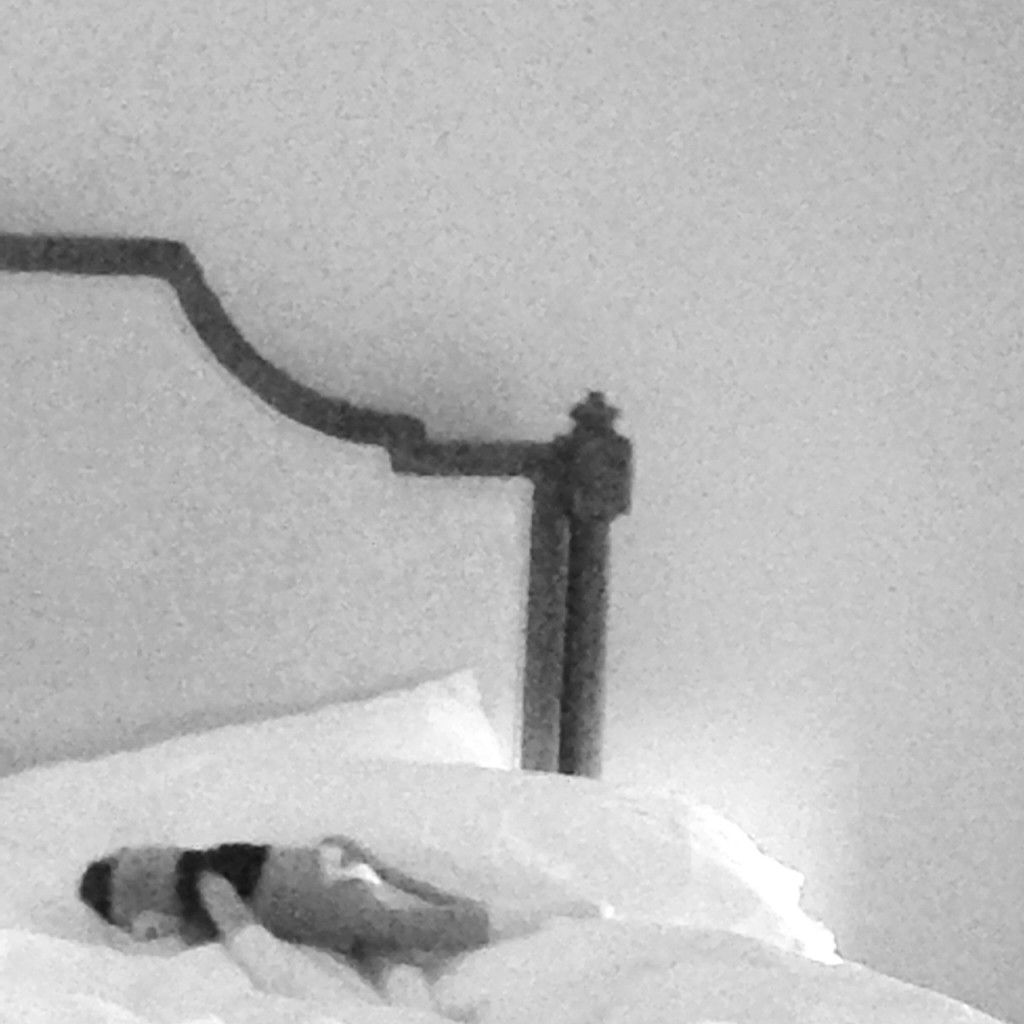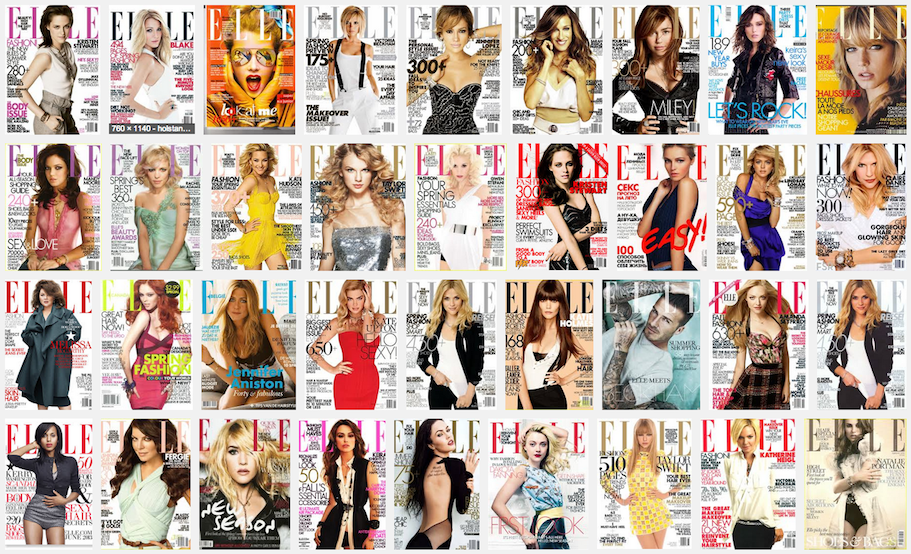


This very morning, I passed a poster for a George Bernard Shaw play and thought, “Don’t wait, Fons; see a show.” When you’re in NYC for longer than a few days, it’s easy to allow art opportunities to slip away because the sense of urgency isn’t there. You have time, you can get to that show before it closes, you can see that exhibit before it’s gone, etc.
The actor Philip Seymour Hoffman died this morning, or maybe he died last night or Friday night; only the coroner knows for sure. Hoffman was found, maybe at the moment I was looking at that poster for the Shaw play, in the West Village where he lived. The New York Times reports he had a needle in his arm and that there was an envelope of heroin nearby. An addict’s nightmare would be one without the other, I guess.
When I was in the city in 2000, I went to see True West by Sam Shepard at Circle in The Square Theater on Broadway. Philip Seymour Hoffman and John C. Reilly careened through that delicious brother-against-brother play, hitting the highs and the lows with this painful tenderness that made the crashes even worse (or better, depending on how you see your emotional manipulation as an audience member.) They made that theater ache, man. I didn’t come up for air the whole time. How could I? They weren’t breathing. That script was bare-knuckled before those guys got to it; in the hands of a director who had the foresight to a) cast Hoffman and Reilly and b) get out of their way, it was a life-changer.
I mean it. I was at a place in my life where I had to decide if I was going to get married to the theater. After seeing True West, I knew I would. I completed my theater degree from the University of Iowa and promptly moved to Chicago, still the best place in the country to make stuff to put onstage. I helped found the (now) wildly successful Gift Theatre Co., and found an artistic home with the Neo-Futurists. Someday, we’ll talk more about all that, but not now.
This is about the actor I saw in True West fourteen years ago who showed me that good theatre is so hard to make, you’ll see it about as often as you see a shooting star — and when you see it, your DNA changes. Philip Seymour Hoffman, in one role, in one production, wiped every crappy college show from my eyes and removed the illusions I had about what I thought I knew about making theatre. His ferocious performance was in fact an act of kindness to me, and he had no idea I existed. But I did, in that dark theater, and I was watching him. He helped crystalize for me a vision of the kind of work and the kind of art American theatre is capable of and when I heard he died, my hand shot up to my heart and I could feel it beating.
I’m sorry you were addicted to heroin, Philip Seymour Hoffman. That is a terrible drug and I know you were afraid when you died. But it’s over, now, and in all the good ways — only the good ways — you’re still making great art. You made it in front of a lot of people who were watching, hard, and plenty of us are still alive, still trying to reach your standard.
* “A ghost light is an electric light that is left energized on the stage of a theater when the theater is unoccupied and would otherwise be completely dark.”

If you want to work in the quilt industry — and with a $3.5B+ annual market valuation, a lot of people do — you’re going to need to go to Quilt Market. Anyone doing serious business in the quilt world is there and though there are many shows throughout the year that serve the industry, when people ask you, “Will I see you at Market?” they mean either International Spring or International Fall Market, whichever comes next on the calendar. The answer to the question should be, “Absolutely.”
At Market, you see what’s new. You get the V.I.P. scoop. You make predictions. You discover new designers, new talent. You see who’s hot, who’s tepid, and who isn’t there at all. You make deals. You make friends and faux pas. If you want to be in the business, you have to be at Market because please. Everyone who’s anyone, darling.
Really, going to Quilt Market is a little like being in New York City. Everything happens here first. If you’re not here, you’re just gonna have to find out when everyone else does: later.
I’m staying in an East Village hotel while my NYC living situation sorts itself out. At 4:00am this morning, I woke with a stomachache and couldn’t get back to sleep. (When you don’t eat much during the day and then you eat steak, these things happen.) My hard and fast rule about insomnia? Get up. Tossing and turning is unacceptable. Just get up. Read something or clean something. If you’re in my situation, pad down to the lobby with your computer and talk about vogueing with Zachary, the night porter.
I was scamming some tea from the not-technically-open tea and coffee station when Zachary appeared. He startled me and I instantly regretting not combing my hair or at least putting on flip-flops. I looked like a barefoot, homeless crazy person.
“Please don’t throw me out,” I said, sleep-deprived and thieving. “I just knew where the honey was. I-I’m a good person,” I spluttered.
“You’re fine,” said Zachary, dressed in black skinny jeans and a cap, laconic and cool in that way that early twenty-something New York kids are laconic and cool.
“Thanks,” I said. “I couldn’t sleep, so I’m awake.” Even in the middle of the night, I am excellent at stating the obvious. It’s a talent.
We started chatting. I told him about being a writer and a quilter; he told me about a nearby gallery that is currently exhibiting quilts. I asked him what he did when he wasn’t working at a small hotel at 4am. He told me he graduated last year with degrees in art history and publishing, that he was also a writer, and that he is holding a panel discussion on ballroom culture on Thursday.
“Ooh,” I said, “Tell me more.” Because Zachary wasn’t referring to tango clubs or waltzing, and I knew it. Ballroom culture refers to the dance-centric, underground LGBT subculture that brought us such touchstones as vogueing and the “house” system, a way of forming alliances/collectives within the underground drag and dance community. Mainstream references to all this include the seminal Paris Is Burning film (1990), Madonna’s “Vogue,” and RuPaul’s “House of Love” and Lady Gaga’s “House of Gaga,” though one must note the mass-appeal versions of these things look different from the ground-floor ballroom world Zachary knows.
What he shared with me about the evolution and current state of ballroom culture was fascinating. I was getting the story, that Market-style scoop.
Vogueing has its roots in 1960s Harlem, it became vogueing in the 1980s and 1990s. But it’s been twenty-five-ish years since Paris is Burning and a whole lot has happened in the scene in that time, no surprise. There’s femme voguing (extravagant, feminine, beat-centric) and “dramatics” (jerky, hard, battle-centric) and those styles are already waning to make room for what’s next. The music has changed a lot, too; less wailing diva house, more crunchy, techy beats so fast and frenetic the standard measure of “beats per minute” ceases to be applicable. The Internet happened in there, too, so now the good DJs are instantly hot across the country, as opposed to how it happened in the old days: slowly, while mixtapes were transported from NYC to Chicago to San Francisco and back. Dance styles are instantly mimicked and adapted. We watched YouTube videos together for some time and Zachary showed me the vibrant and vital community of people who are keeping ballroom alive, well, and just as competitive and snatchy as ever. That’s a compliment, by the way.
Anything I’ve gotten wrong or weird in my report is to be blamed entirely on me and my lack of sleep, not Zachary. He knows his subject, he dances, he is more than qualified to host his panel on Thursday.
This is why you get up when you can’t sleep. There’s so much to learn. There’s so much to see, even at 4am. And in the center of the world (that would be New York City), it’s ever-so-slightly more true.
Work.

At brunch on Sunday, my (affianced!) sister Rebecca told tales of her recent trip to Tokyo. A transcription of that exciting conversation is forthcoming, but last night I was reminded of the specific tale she shared of the elegant efficiency of Tokyo noodle shops. I was reminded because I was sad.
Here’s how a Tokyo noodle shop works: you step up to an automated kiosk and put in your money. You press a button for the kind of ramen you want (select by picture) and bloop! out comes a ticket. You take the ticket to the noodle man and zing! he makes your ramen. Double happiness, arigato! No cashier, no waiter, no wait. The only possible mess in this process might be soup on your blouse.
Friends, let us leave the Tokyo ramen shop and pay a visit to its berserker anti-matter evil twin: Vapiano in the good ol’ U.S. of A.
[Pardon me, darling: before I begin, I’ll need my blood pressure medication, yes, thank you, and my smelling salts. Is there Xanax? There is? Yes, dear. I’ll have two, please, one for now and one for five minutes from now. I’ll take them with a glass of Sauvignon Blanc. Thank you, darling, and a napkin. That’s good. Yes, that’s very nice. Now, gather ‘round, children.]
Vapiano is a German-owned restaurant chain. The first Vapiano opened in 2002 and today there are 120 locations worldwide. Chicago got a roomy one in the old Carson Pirie Scott building about a year ago. During the construction phase, I passed it and felt happy because a quick, freshly prepared salad option downtown is always welcome news. Indeed, Vapiano proclaims “fresh” Italian-style pizza, pasta, soup, salad, and dessert. And each Vapiano restaurant has a full bar and a large dish of gratis gummy bears at the host stand when you walk in. Why, I don’t know, but when we went there, Yuri ate two handfuls of them immediately. This ended up being a smart move because at Vapiano, it’s gon’ be awhile.
The first thing that happens is that you’re greeted by a hostess so scared to tell you what’s about to happen, she races through the spiel fast enough you may wonder if she’s speaking English. Something about cards? Something about stations? Tapping? Paying…sometime in the future? She thrusts menu cards into your hands and you are then absorbed by the Vapiano food pen. We learn from the Vapiano website that the name is a word inspired by an Italian proverb that goes, “Chi va piano va sano e va lontano,” which translates to: “People with a relaxed attitude live a long and healthy life.” Clearly, Vapiano stakeholders are being ironic. There is nothing relaxed or healthy about their “high-concept” restaurant. “Long” works. Keep “long.”
So you get a credit card thing. There are stations in the food pen for the different offerings, pizza, pasta, etc. You stand at the counters and order what you want from the long-suffering line cooks whose smiles are so obviously required for employment there, you want to lean forward conspiratorially and tell them they can give it a rest. But you don’t. Because you’re hungry. You tell them what you want and then they say something you can’t hear and they make a swiping motion and gesture to your card. You look around for a credit card machine, but there isn’t one. There’s a screen, though, embedded in the counter, so you smoosh your card down there and it goes beep! and the line cook looks with a pitying look of congratulations and begins to make your carbonara.
Which takes a long time. So long. And you’re not seated at a table waiting, remember. You’re just standing around. And what do you do with the card? Well, the Vapiano people tell you that this is the beauty of the whole thing, that you can take the card all around and just keep ordering all kinds of stuff for hours and hours and your card keeps everything straight for you. (A waiter is surprisingly efficient for this, too, but don’t mind me; my Xanax just kicked in.) But… But where do you put it? Your wallet seems a little…final. Your pocket seems risky, though, because you’re blithely eating all this German-Italian (?) relaxation and health and what happens if you lose that card or forget what it is and give it to your kid’s teacher for Christmas? And it still wasn’t totally clear whether or not we should pay and then eat or hang onto the card even longer and let its confusing presence further flavor our caprese salad.
I spent most of the “experience” running all over the damned place, picking up the food we had ordered 20 minutes earlier. Got the soup! Okay! What else? Oh! Salad! Be right back! Ooh! Our pager went off! (Oh, there are pagers involved, too.) Pizza! Okay, do we have everything? Okay, I totally wanted a piece of pizza, but that’s okay! No, I wasn’t here. It’s fine. How was it? Awesome. Ooh! Dessert! Be right back.
Surely there are people who love this. Surely there are people who understand it better. I am entirely aware that I’ve probably done Vapiano incorrectly, that there’s something wrong with me. If anyone, German, Italian, American, or otherwise can help me, help me, because I really really like the tomato soup.
Seriously, it’s great.
Ladies and gentlemen, welcome to The Pendennis Observer. If you’re not gotten The Pendennis Observer before, please find all the details you’ll need right here.
We’re happy to report that the PaperGirl has arrived safely in New York and that she has had all her shots. Dispatches begin tomorrow. Pendennis is with her now.
We wish you a pleasant evening.
– The Management





I take several magazines, but I’m editing. Elle has got to go.
Elle is good at what it does, reaching with almost surgical precision into the hearts and minds of its customer: the female of the species. Though the world of fashion publishing is slightly more fickle (and fraught, and funded) than the quilt one, I am a magazine editor and I can assure you: getting into hearts and minds is the difficult and never-ending job of any magazine that wants to succeed. Elle makes it look easy. Published by Hearst here in the U.S. since 1945, Elle wins industry awards frequently, and the number of ads inside speaks to its profitability. The editorial is solid (mostly), the photography and the layouts are tops, and if you want to know what’s fashionable these days, you will find out in Elle.
But it’s over, and it happened yesterday morning.
I was staring out the window, thinking about the concept of study hall and noticed the latest issue of Elle in my mail stack. Lovely! Historically, I have enjoyed fashion magazines, thus the getting one in the mail and all. I pulled the magazine to my lap and spent 20 minutes — not a moment longer — flipping through the pages and feeling increasingly ill. Page after page of peacock colors, nail lacquer, hair product, handbags, oils, skin cream, more shoes; miserable fourteen-year-old girls, hostile ad campaigns, backstage “candids” that took thirty minutes to set up; “up and comers,” “ones to watch,” and reanimated has-beens who have been given a page because it’s ironic to see a now-haggard Jennifer Beals in a leather jumper posing with Miley Cyrus. Or something.
What the hell are they doing to us?
The fashion industry is an easy target. It’s foolish, it’s vicious, it’s myopic, it’s preposterous: I am saying zero new things. I’m also not saying that fashion is frivolous. I care deeply about style and apparel. This is precisely the problem. The New York Times street fashion photographer Bill Cunningham said once, “Fashion is the armor to survive the reality of everyday life,.” Correct. Every morning, I decide who I will be that day by choosing what I’ll wear. My mood and my mien are directly tied to what I’m in by 7:00am. I’m not alone in this. Fashion is powerful.
Fashion magazines are not. That’s why I’m done. Fashion magazines take the awesome power of fashion and kill it dead. Fashion magazines show one, itsy-bitsy tier of fashion: the one that proclaims, “Price is no object. Neither is location.” I don’t begrudge the people who take up this space; I’m genuinely happy they can access it. But I turned to a picture of a woman in a skirt that cost $6,995 and with deep conviction, I rolled up the magazine and banged it on the couch with a whap! whap! whap! I was furious. You know who buys and reads Elle? The 27-year-old admin assistant who just got a modest raise. She lives in the west suburbs and drives an hour in traffic twice a day. The married mother of two getting a mani-pedi in Omaha. The single girl in the city who has some disposable income but also student loans that wake her up at night. The aging sun-tanner. They all love fashion, too, so they look at fashion magazines. But the message shared with them isn’t one of inclusion: it’s either a) this isn’t really for you; or b) you should be able to buy this, eventually.
Shame on you, Elle. Shame on you and your brethren for totally obscuring fashion with money. I have an idea: you take that $6,995 skirt and you wear it. Go ahead. Put it on. That’ll be punishment enough. It looks as ridiculous on you as it would on the Omaha mom. Floor-length silk pleats? Are you drunk?
Silver lining: the rise of the street fashion blog. These blogs show actual citizens of Earth doing fashion and showing style, mixing the high and the low, getting bourgeoise a little smutty or classing up what’s grungy. In these images, the power of fashion returns. Consider me clicking — and not leafing — forevermore.